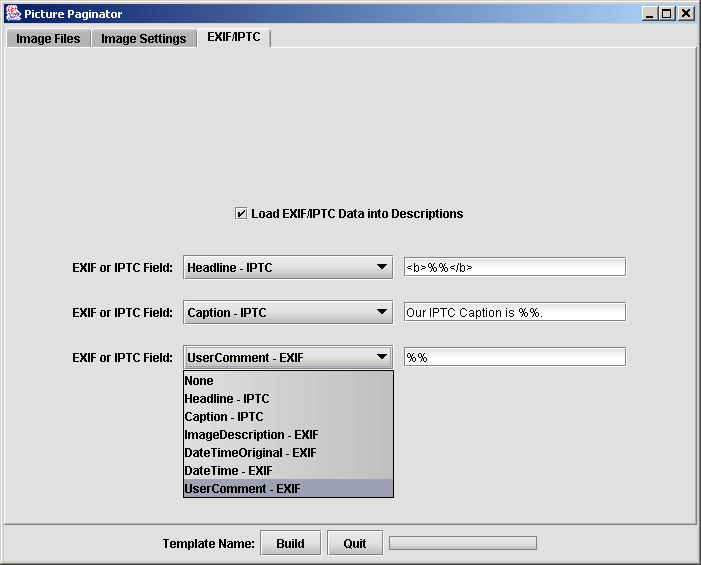Boy, are we glad you asked. We really didn't expect this question. Well, maybe just a little.
EXIF and IPTC are two different packets of information that can be embedded into JPEG, TIFF, and other files. They're often referred to as headers but that's not technically accurate; the files are built as chains of packets with the EXIF and IPTC information being optional inside them.
The EXIF structure has spots for all sorts of technical data on the digital image, such as digitization timestamp, pixels, color mapping, and more. It also has places for a User Comment, original filename (i.e. what the camera named it), the time stamp for when the shot was actually taken, and quite a few other items.
The IPTC structure is considerably more limited and less technical. It includes copyright information, transmission identifiers, and so on. However, it is more useful for this purpose because it also includes a Caption and a Headline, which can be used to describe the photo.
Directly out of the camera, most images will include EXIF data describing the technical aspects of the photo, but neither IPTC data nor an EXIF user comment (for obvious reasons.) Images saved by or modified in my favorite editor, Paint Shop Pro 7, will have neither; Paint Shop Pro currently obliterates any such packets.
There are some wonderful tools for annotating and restoring this data though. The two I use are Exifer and PixVue. Exifer is quite powerful and has a bit of a learning curve. It also isn't quite as convenient for annotation as PixVue, but Exifer is wonderful for copying and restoring EXIF and IPTC data. PixVue is more limited but what it does, it does wonderfully; it plugs into Explorer and provides a fast convenient slideshow and property-viewing mechanism that makes culling new images very easy and fast. Unfortunately any annotations done in PixVue are written to a PDF header in addition to the other two formats; neither Exifer nor PicturePager support the PDF header. Exifer supports a JPEG comment header which PixVue does not support. So for best cross-platform compatibility, stick to the EXIF and IPTC headers.

The EXIF/IPTC tab is used to select whether field data should be pre-loaded into the Comment field of the Images tab when a new image is loaded. That is the only time that these settings have any effect: upon loading of a new image into the image list. Pre-existing comments in the image list are never overwritten automatically.
Currently only the six fields judged most likely to be useful are available. Others could easily be added; feel free to send an email requesting additional field support. The list was kept short to avoid confusing users, especially those new to the world of digital photos.
Next to the field combo-box is a text box; this is used for entering the pattern to be plugged into the comment. If-and-only-if a field value is found, the contents of this text field will be inserted into the Comment box, with the field contents replacing a double-percent (%%). If no double-percent is found or the pattern text box is empty, the field value will simply be inserted without any wrapping.
Most of the fields should hopefully be fairly obvious by now, but the difference between DateTime and DateTimeOriginal may be subtle to new users. Programs that support EXIF will update DateTime on modification, while DateTimeOriginal should continue to reflect the time the photograph was actually snapped.